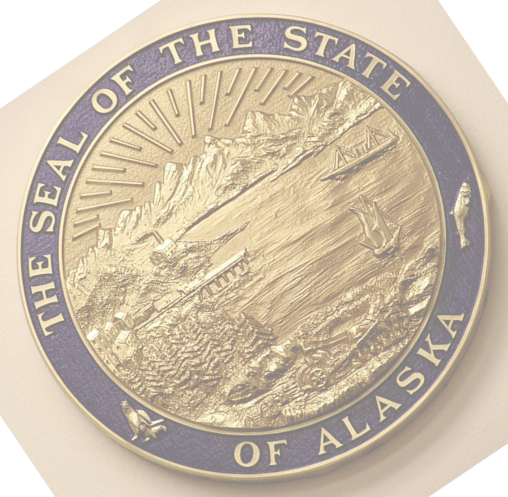On March 28th, I introduced SCR 2 in the Senate. A week later, the resolution was heard in the Senate Judiciary Committee and held with intentions of bringing forth some revisions in January of 2014. If you have any questions or suggestions, please contact my office during the interim. Click here to read the resolution. Below is my sponsor statement explaining the intent of SCR 2:
The Tongass National Forest was created in 1907 by President Theodore Roosevelt. Today, it is the largest national forest in the United States with 16.8 million acres. In 1947 Congress enacted the Tongass Timber Act the purpose of which was to clear the way for long term timber sales on the Tongass. From the 1950’s through the early 1990’s, the commercial harvest of timber from the Tongass National Forest formed a major part of the economy in Southeast Alaska. Unfortunately, that’s no longer the case because the timber industry does not have access to an adequate volume of timber supply that can be economically harvested from the Tongass National Forest. Interestingly, only 400,000 acres of the Tongass have been harvested between its creation in 1907 and today. In addition, there were more sawmills operating on the Tongass in 1900 than there are today.
The reasons behind the lack of timber supply began in 1980 when Congress passed the Alaska National Interest Lands Conservation Act (ANILCA) establishing 4.5 million acres of Wilderness and National Monuments in Southeast Alaska. In order to ensure that these land withdrawals from the available timber base did not harm the existing timber industry, ANILCA mandated that the Forest Service offer 450 million board feet of timber annually. Then in 1990, Congress passed the Tongass Timber Reform Act (TTRA) creating another 1.1 million acres of Wilderness and Roadless Area set-asides, further reducing acreage in the Tongass National Forest that could be used for timber harvest. In 1997 the Forest Service adopted a new land management plan for the Tongass National Forest and switched to “ecosystem management.” Under this new philosophy, attention to timber sale economics was abandoned. However, in 2005 the 1997 Tongass Land Management Plan (TLMP) was set aside and nine major timber sale environmental impact statements were enjoined pending preparation of an amended Forest Land and Resource Management Plan. (See the 9th Circuit’s Decision in Natural Resources Defense Council v. United States Forest Service, 421 F.3d 797 (9th Cir. 2005)). The 1997 Forest Plan was enjoined, not because of an environmental problem, but because of a Forest Service math error in computing the volume of timber needed to meet market demand.
Every significant timber sale the Forest Service has attempted to make since adoption of the 2008 Amended TLMP has been litigated. This litigation has caused annual Forest Service sales to be reduced to 30-40 MMBF, not nearly enough to supply the integrated industry advocated by the Governor’s Timber Task Force.
Moreover, the Secretary of Agriculture interfered with implementation of the 2008 Amended TLMP with his 2010 announcement of an “immediate transition from old growth timber to second growth timber.” This announcement was made notwithstanding the fact that there is insufficient second growth timber on the Tongass that meets the definition of cumulative mean annual increment required by the National Forest Management Act (NFMA). Timber sales in old growth were delayed while Forest Service professionals have tried to make it clear to the Secretary that an “immediate” transition to second growth would violate the NFMA.
In March 2011 the Federal District Court for the District of Alaska set aside the Tongass Exemption from the 2001 Roadless Rule, which the State had negotiated with the Federal Government in 2003. This has resulted in 9.6 million acres of non-timber-harvest areas being created on the Tongass in addition to the 5.6 million acres of non-timber-harvest Wilderness areas. In addition, the Roadless Areas create a serious impediment to mining and to hydropower and other renewable energy opportunities on the Tongass.
The Tongass National Forest currently encompasses about 93% of the available timberlands in Southeast Alaska. However, only two percent of the Tongass National Forest is managed for the purpose of providing local communities with the opportunity to harvest timber. Consequently, the Forest Service has monopoly power over the timber supply. In the past four years, several efforts to revitalize the timber industry in Southeast Alaska have failed because a timber industry cannot exist without an adequate timber supply. Since the U.S. Forest Service is no longer able to provide enough timber in the Tongass National Forest to sustain a viable timber industry in Southeast Alaska, it is time for the Governor to intervene.
Under the Alaska Statehood Act, the federal government provided Alaska with a 103,350,000 acre land entitlement. Of that original land entitlement, 5,500,000 acres still remain available for selection. SCR 2 urges the Governor to take steps necessary to select land in the Tongass National Forest as part of Alaska’s statehood entitlement. However, section 6 of the Alaska Statehood Act limits the state’s selection of land from the Tongass and the Chugach National Forests to 400,000 acres and further limits the use of that land to recreation and community expansion. The state should be entitled to select some of its remaining land entitlement from the Tongass National Forest without being limited to recreation and community expansion. This could be achieved through efforts by the Governor to negotiate the transfer or sale of timberland in the Tongass National Forest or by working with our federal delegation to amend the Alaska Statehood Act.

Comments are closed